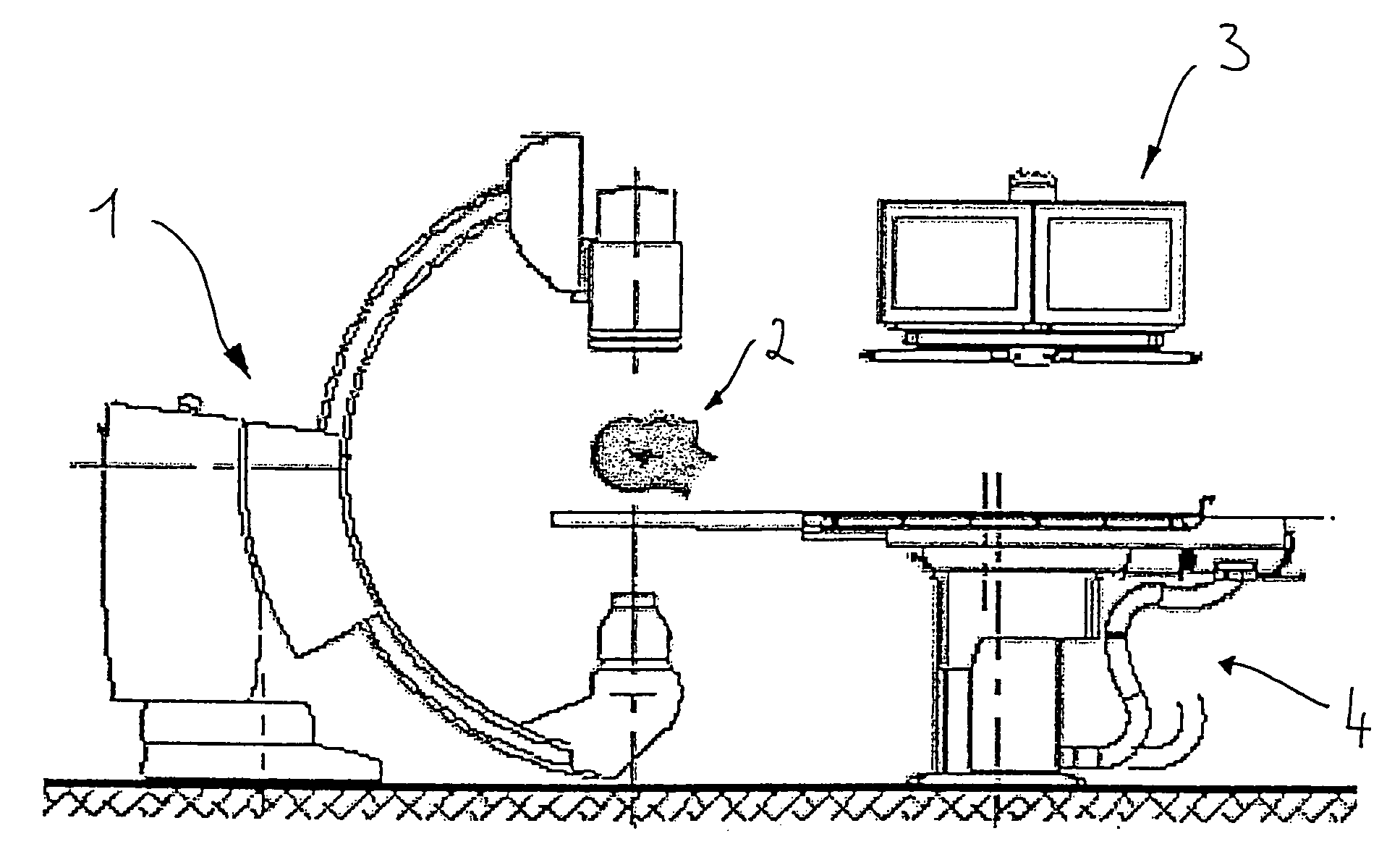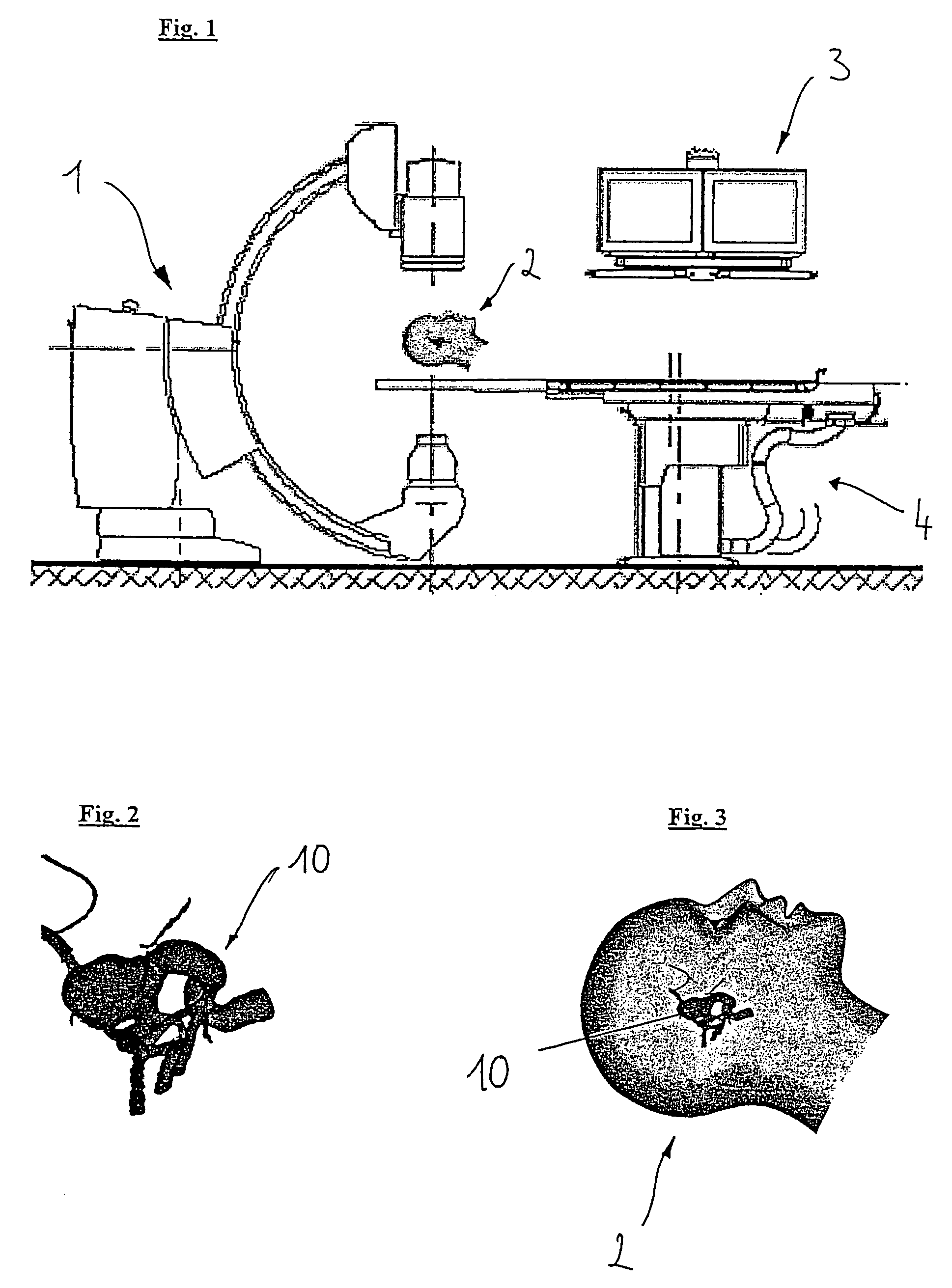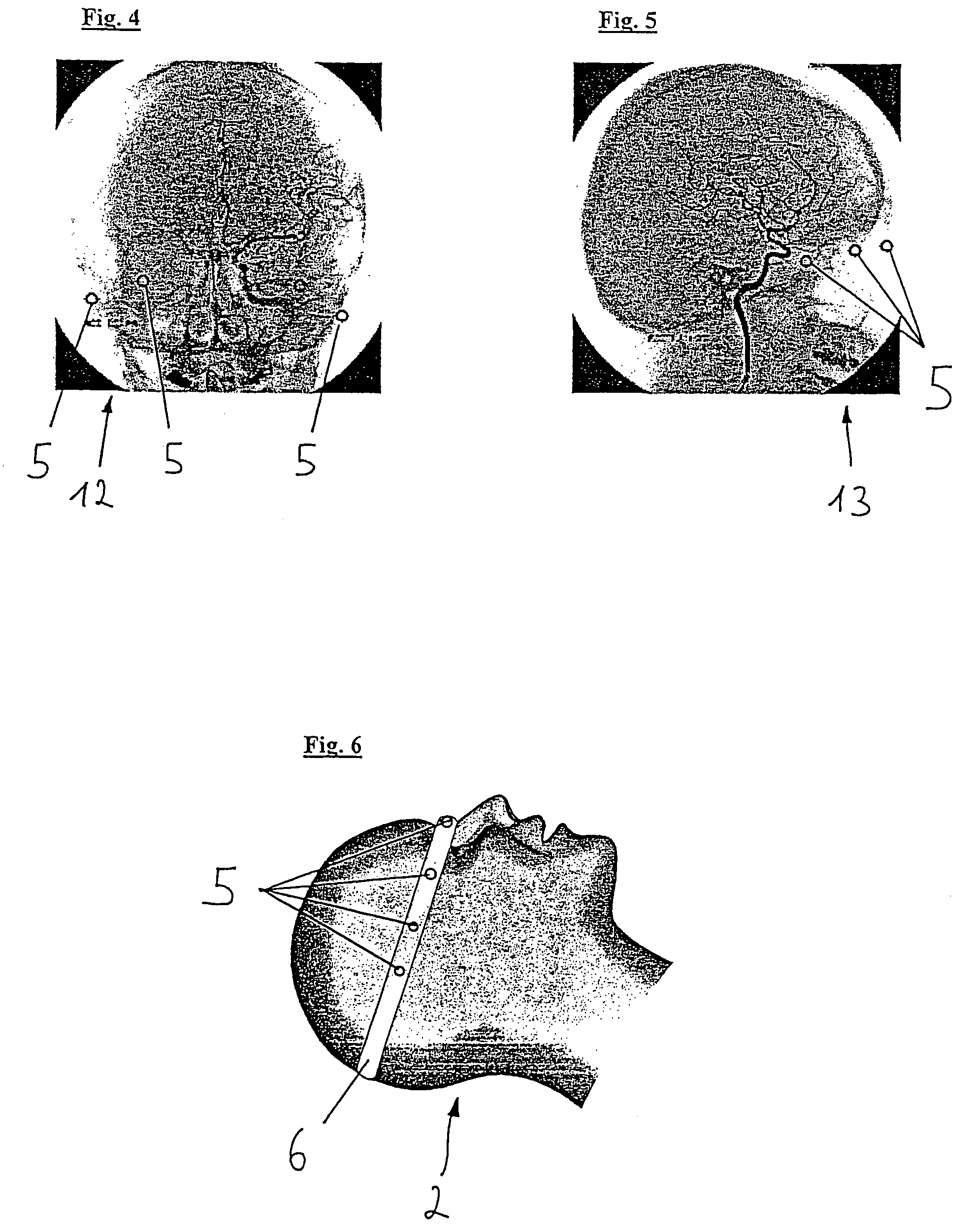Perspective registration and visualization of internal areas of the body
a technology of internal areas and registration methods, applied in the field of registration and visualization of internal areas of the body, body structures and organs, can solve the problems of inability to easily provide artificial landmarks, inability to apply registration methods in cases, and inability to register volume data sets using conventional methods
- Summary
- Abstract
- Description
- Claims
- Application Information
AI Technical Summary
Benefits of technology
Problems solved by technology
Method used
Image
Examples
Embodiment Construction
[0030]FIG. 1 shows an imaging device, such as a rotational angiography scanner 1, which can take recordings of a patient, of whom only the head 2 is shown and who lies on an adjustable couch 4. Monitors 3, for example for visually representing anatomic structures, can also be provided in the operating theater. The vascular structure 10 shown, for example, in FIG. 2 lies in the patient's head 2, as can be seen in FIG. 3. The representation in FIG. 2 corresponds to one such as can be obtained as a three-dimensional representation from a volume data set, when the vessels are highlighted and the surrounding structure is faded out. This is mostly enabled by using a contrast medium for angiography recordings and corresponding calculations (computer graphics). The volume data set including the vascular structure 10 is outwardly limited such that it does not contain any external points, i.e., any points on the “surface” of the patient. It is a high-resolution volume data set in order to be ...
PUM
 Login to View More
Login to View More Abstract
Description
Claims
Application Information
 Login to View More
Login to View More - R&D
- Intellectual Property
- Life Sciences
- Materials
- Tech Scout
- Unparalleled Data Quality
- Higher Quality Content
- 60% Fewer Hallucinations
Browse by: Latest US Patents, China's latest patents, Technical Efficacy Thesaurus, Application Domain, Technology Topic, Popular Technical Reports.
© 2025 PatSnap. All rights reserved.Legal|Privacy policy|Modern Slavery Act Transparency Statement|Sitemap|About US| Contact US: help@patsnap.com



